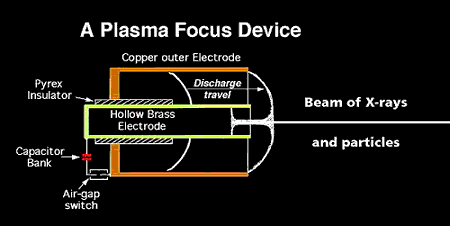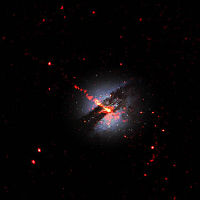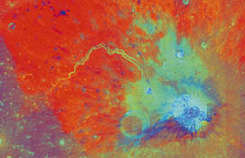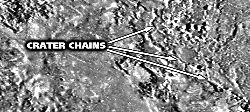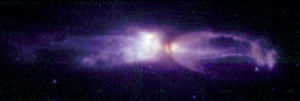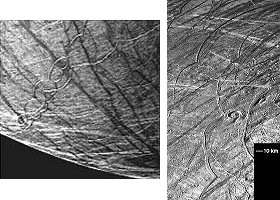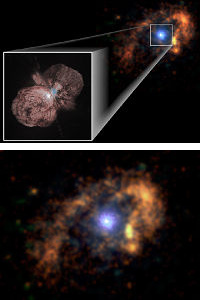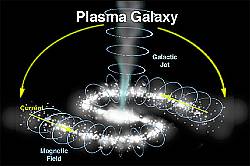holoscience.com | The ELECTRIC UNIVERSE®
A sound cosmology for the 21st century
Strange Star or Strange Science?
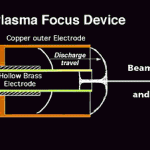
Nowhere is the gravitational paradigm of cosmology shown to exhibit more strangeness than in compact high energy phenomena in deep space. A report in the journal Nature of 15 November proposes that a recently discovered star “is made of an exotic stuff called ‘strange matter’, never yet seen on Earth”. In other words, it may…
HAWAIIAN-STYLE VOLCANO ON IO?

Excerpts from a NASA/JPL Press Release November 5, 1999 New images from Galileo reveal unexpected details of the Prometheus volcano on Io including a caldera and lava flowing through fields of sulfur dioxide snow. It appears that the Prometheus volcano on Io has characteristics remarkably similar to those of the Kilauea volcano in Hawaii, although…
CHANDRA VS. CHANDRA
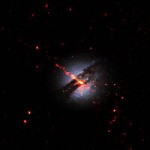
NASA’s premier X-ray observatory was named the Chandra X-ray Observatory in honor of the late Indian-American Nobel laureate, Subrahmanyan Chandrasekhar. He was widely regarded as one of the foremost astrophysicists of the twentieth century. Early in his career he demonstrated that there is an upper limit (now called the Chandrasekhar limit) to the mass of…
IT HAS TO BE MOONGLOW!
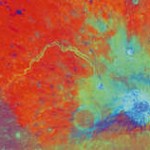
The region around the crater Aristarchus (at lower right) has been a focus for observers searching for transient lunar phenomena. This false-color mosaic was assembled from blue, red, and near-infrared images taken by the Clementine spacecraft and represents brightness ratios between the wavelengths. Images taken several weeks apart reveal a surface change in the cobra-head…
GRAVITY vs PLASMA
Before leaping straight in to Mel Acheson’s Gravity vs Plasma view, I thought it would be appropriate to explain the difference between the 2 cosmologies. EXPLANATION: Accepted cosmology is based on the unique case of electrically neutral bodies embedded in neutral interstellar gas and dust. It is derived from the very special physics that applies…
CLOSEST EVER PICTURE OF IO
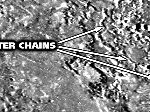
From NASA News of 24 October 1999 The highest resolution image ever of Jupiter’s volcanic moon Io, (the black and white image at top) was taken by NASA’s Galileo spacecraft on Oct. 11, 1999, from an altitude of 617 kilometers (417 miles). It shows an area about 7.2 kilometers (4.5 miles) long and 2.2 kilometers…
DYING STAR, OR SERIOUS ELECTRICAL FAULT?

Comment on NASA News of October 24, 1999. “The object shown in this NASA/ESA Hubble Space Telescope image is a remarkable example of a star going through death throes just as it dramatically transforms itself from a normal red giant star into a planetary nebula. This process happens so quickly that such objects are quite…
JUPITER’S THUNDERBOLT
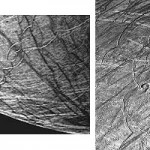
Why did the planetary gods dominate our imagination at the dawn of civilization? Yet nine out of ten people today could not identify bright Jupiter in the night sky. And another question that is never asked, what was really meant by Jupiter’s weapon, the thunderbolt? It seems it was no earthly lightning. It moved “like…
SHOCKS FROM ETA CARINA
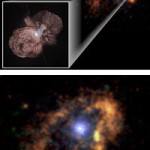
Excerpt from Space Science News: “Just three years ago the Hubble Space Telescope provided a dazzling image of a star that was blowing off massive quantities of material in a blast that looked like a supernova yet, mysteriously, wasn’t one. Now the Chandra X-ray Observatory has looked at Eta Carina and showed details that are,…
THE BIG BANG NEVER WAS!
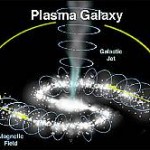
The CHANDRA X-Ray Observatory is fulfilling its promise. Modern cosmology is being found wanting with every new discovery. The reason is simple. The universe is governed by the powerful electric force, not gravity. So by detailed imaging in x-rays, Chandra is able to see clearly for the first time the tell-tale signature of electrical activity…
